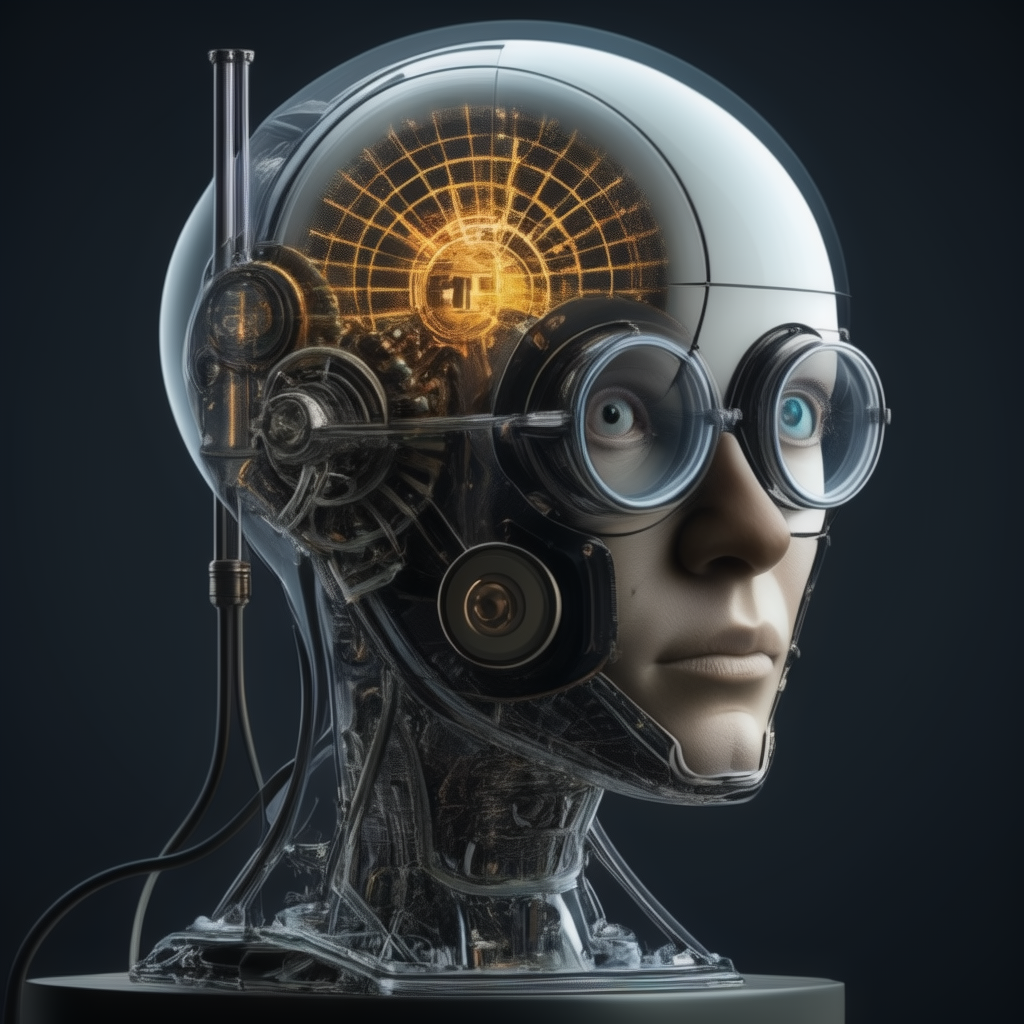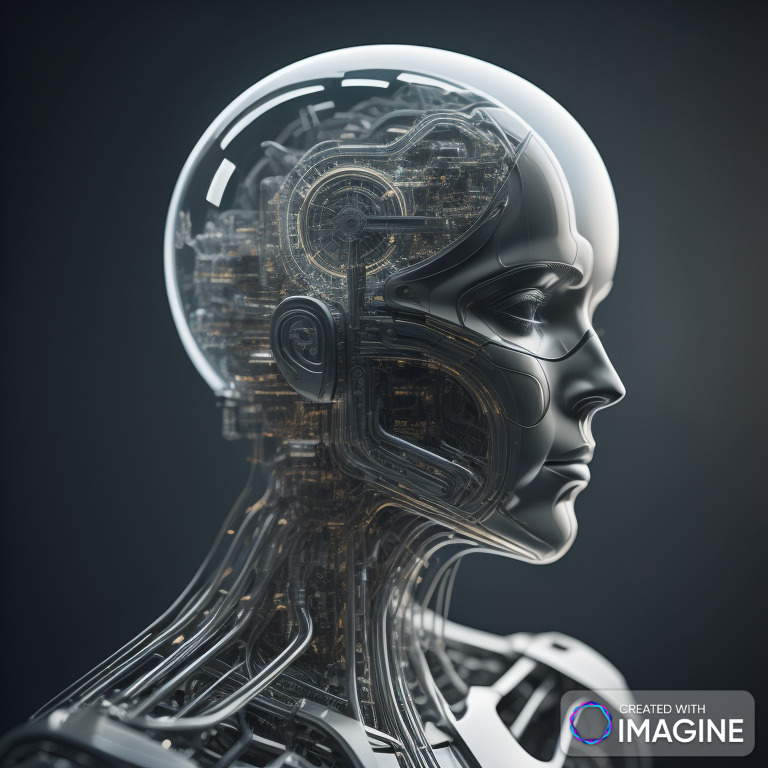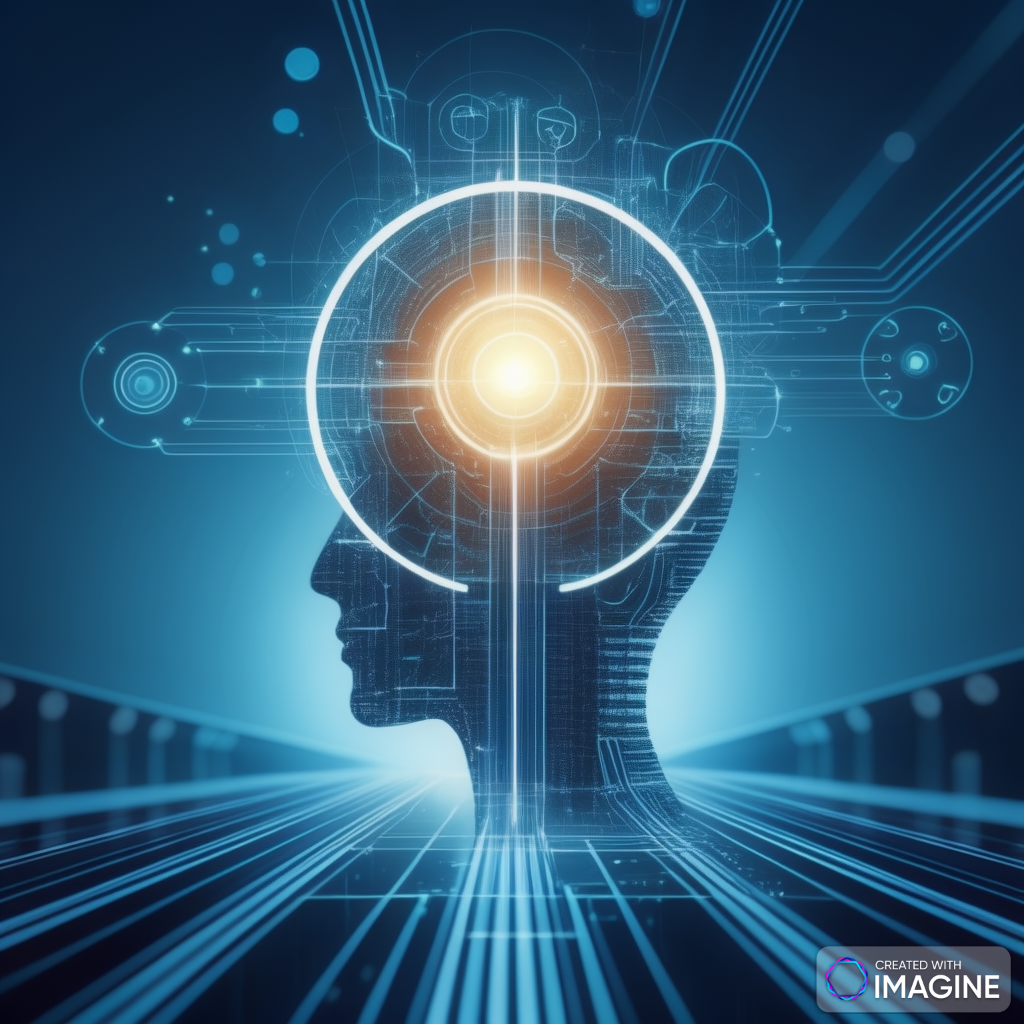Balancing Expressiveness and Complexity in Representations: The Key to Intelligent Systems
In artificial intelligence (AI) and cognitive systems, one of the most fundamental challenges is how to represent knowledge efficiently and effectively. Knowledge representations can vary along an axis of increasing expressiveness, ranging from atomic (simple) to factored (intermediate) and structured (complex). The more expressive a representation, the more complex the reasoning and learning processes become. Striking a balance between expressiveness and operational complexity is crucial for developing intelligent systems that can function efficiently in the real world.
This post explores the implications of this trade-off between expressiveness and complexity and how intelligent systems can operate along this axis to capture the benefits of different representation types.
1. Understanding the Axis of Expressiveness
Knowledge representation is essential for any AI system to reason, learn, and act in the real world. The axis of expressiveness reflects the increasing ability of a language or system to describe complex concepts and relationships. This axis encompasses three broad types of representations:
- Atomic Representations: These are the simplest forms of representation, where knowledge is broken down into basic, indivisible facts or entities. In atomic representation, the system has no internal structure that relates facts. For example, in propositional logic, each statement or fact is treated as a discrete entity without any relationship to other facts.
- Factored Representations: These representations capture some structure by associating each fact with a set of variables. Propositional logic is a common example where facts are represented as individual propositions that can be true or false, but with no deeper connections between them. Factored representations offer more detail than atomic representations but are limited in their ability to describe relationships between facts concisely.
- Structured Representations: These are the most expressive forms, often modeled using first-order logic or other advanced logical systems. Structured representations capture relationships between objects, variables, and functions, allowing for complex reasoning. They can describe concepts like causality, hierarchies, and temporal relationships that factored representations struggle to express.
2. The Expressiveness-Conciseness Trade-off
One of the primary benefits of increasing expressiveness is conciseness. A more expressive representation can describe complex systems in a way that is both powerful and efficient. For instance, the rules of chess can be written in a highly structured language like first-order logic on just a page or two. However, if one tries to describe the same rules using a less expressive language like propositional logic, the description would take thousands of pages due to the sheer complexity of encoding every possible state and move.
This conciseness allows more expressive representations to capture everything a less expressive one can, plus more. However, this also introduces the need for greater computational power. The richer the language, the more difficult and resource-intensive it becomes to manipulate and reason about the information encoded within it.
3. Reasoning and Learning Challenges with Expressive Representations
As expressiveness increases, the complexity of reasoning and learning also rises. While structured representations are more powerful and can model intricate relationships, they can be computationally expensive to work with. Some of the key challenges include:
- Increased computational cost: More expressive representations often involve reasoning algorithms that are computationally intractable for large datasets or complex environments. For example, first-order logic may require more sophisticated algorithms for inference than propositional logic, and even these may not scale well in all situations.
- More complex learning algorithms: Learning from data becomes more difficult as the expressiveness of the representation increases. Factored representations, such as Bayesian networks, are much easier to learn from data than highly structured representations, where one needs to account for complex interactions between objects and relationships.
4. The Need for Intelligent Systems to Operate Along the Axis
To overcome the challenges of expressiveness, intelligent systems that need to handle real-world complexity must find a way to operate at multiple points along the axis simultaneously. Instead of relying solely on one type of representation, intelligent systems can switch between atomic, factored, and structured representations based on the task at hand. This allows them to harness the benefits of both expressiveness and simplicity without being bogged down by the drawbacks of either.
Why This Flexibility Matters:
- Different tasks require different levels of expressiveness: In real-world AI applications, some tasks are simple and can be handled with less expressive, more efficient representations. For example, a task that involves pattern recognition or simple classification might work best with atomic representations. Other tasks, like reasoning about causality or predicting future states in a dynamic system, require more expressive and structured representations.
- Efficient use of resources: By operating along the axis, a system can allocate computational resources effectively. It may choose a simpler, atomic representation for quick pattern recognition but switch to a more structured representation for detailed reasoning or planning. This flexibility reduces the overhead associated with always using a highly expressive representation, even when it is unnecessary.
Hybrid Approaches:
- Hierarchical representations: One strategy for managing this complexity is to use hierarchical representations. Here, simple representations are used at lower levels, while more complex representations are reserved for higher levels of abstraction. This allows the system to handle complexity in layers, moving from atomic to structured representations as needed.
- Task-specific representations: Another approach is to tailor the representation based on the specific requirements of a task. For example, propositional logic could be used for tasks requiring less expressive reasoning, while first-order logic might be used for more intricate reasoning tasks that demand deeper relationships and connections.
5. Real-World Applications of Expressive Representations
In practical applications, real-world AI systems benefit from using a mix of representations. Some common examples include:
- Autonomous Vehicles: Autonomous systems, such as self-driving cars, use a combination of simple factored representations for sensor data (e.g., object detection) and more structured representations for reasoning about traffic rules and planning routes.
- Natural Language Processing (NLP): NLP systems often need to handle structured representations of language, such as syntax trees or semantic networks, while also working with simpler representations for tasks like text classification.
- Robotics: Robots interacting with humans or dynamic environments rely on structured representations to reason about objects and relationships. At the same time, they may use less expressive representations for low-level control and movement.
To explore the topic in greater detail and cover the spectrum from basics to advanced, let’s break down additional concepts related to the axis of expressiveness in representations, the trade-offs involved, and strategies that go beyond the basic ideas mentioned earlier. We will delve deeper into theoretical principles, practical approaches, and advanced methodologies used in AI systems to handle varying levels of expressiveness.
1. Basics: The Role of Representations in AI
At its core, knowledge representation is the foundation upon which AI systems reason, learn, and interact with the environment. Representations serve as models of the world that encode facts, rules, objects, and relationships in a way that the system can manipulate. Different representations are used depending on the complexity of the domain and the tasks involved.
- Symbols and Semantics: In knowledge representation, symbols are abstract tokens used to refer to entities, objects, or facts. Semantics refer to the meaning of these symbols. The more expressive the system, the richer the semantics.
- Simplicity vs. Generality: A key trade-off is balancing between simpler systems that operate quickly but offer limited insight and more general systems capable of expressing deeper, more complex relationships at the cost of computational overhead.
- Example: In the early stages of AI development, atomic representations such as propositional logic were favored due to their simplicity. However, as problems became more complex, the need for more expressive systems arose, leading to the development of first-order logic and beyond.
2. Intermediate: Structured Representations and Conceptual Graphs
Moving beyond basic representations, we encounter structured representations that are more complex but allow for richer expression of relationships, hierarchy, and causality. These structured forms can model concepts, agents, actions, and interactions in real-world situations.
- Conceptual Graphs: A conceptual graph is a type of structured representation where entities are connected through relationships, and these relationships can represent a wide range of real-world scenarios (e.g., “the car is on the road”). Conceptual graphs are used to reason about the relationships between concepts in natural language processing (NLP), robotics, and AI reasoning tasks.
- Object-Oriented Representation: Inspired by object-oriented programming, object-oriented knowledge representation models objects as entities with attributes and methods. This structured approach allows for inheritance, modularity, and the encapsulation of behaviors—critical for building intelligent agents in dynamic environments.
- Frame-Based Representation: Frame systems use a structured hierarchy to organize knowledge about the world. Each frame represents an entity or object and contains slots to store attributes and relationships. Frame-based systems are useful in domains like expert systems or medical diagnostics, where knowledge must be organized hierarchically but allows for flexible reasoning.
3. Complexity in Reasoning: Decidability and Computational Intractability
As expressiveness increases, we encounter significant challenges related to decidability and computational intractability. These challenges become more prominent in advanced reasoning systems.
- Undecidability: In formal logic, as the expressiveness of the representation increases, the problem of undecidability may arise. In some cases, it may not be possible to determine whether a given statement or conclusion follows logically from a set of premises. This is particularly relevant when moving from propositional logic (which is decidable) to first-order logic (which is semi-decidable).
- Computational Complexity Classes: Problems that involve highly expressive representations often fall into higher computational complexity classes, such as NP-complete or PSPACE. The more expressive the language, the harder it is to reason within it. This necessitates the development of approximate reasoning methods or the use of heuristics to manage intractability.
- Trade-offs in Practical Systems: Practical AI systems, such as those used in automated planning, must balance expressiveness and tractability. For example, PDDL (Planning Domain Definition Language) used in AI planning encodes highly structured representations but requires heuristic-based search algorithms to handle the complexity of solving planning problems in large state spaces.
4. Learning from Data: The Role of Representations in Machine Learning
In machine learning (ML), the way data is represented has a profound impact on how models are trained, optimized, and deployed. Expressiveness affects how much structure the model can capture in the data and how well the model generalizes.
- Feature Representation: One of the key challenges in ML is feature engineering—the process of transforming raw data into meaningful input for models. Factored representations (such as feature vectors) are often used, but these can limit the system’s ability to capture complex relationships between features. More expressive representations, such as graph-based models or neural embeddings, offer a richer way to capture dependencies between variables.
- Structured vs. Unstructured Data: Structured representations excel when the data is well-organized and relational, such as in knowledge graphs or semantic networks. However, when dealing with unstructured data like text, images, or raw sensor input, factored or learned representations (e.g., embeddings in NLP) often outperform due to their flexibility.
- Representation Learning: Modern deep learning systems focus on learning expressive representations directly from data. Deep neural networks can automatically learn abstract, hierarchical representations that encode complex relationships in data. This is particularly powerful for tasks like image recognition or language modeling, where manually designed representations fall short.
5. Hybrid Approaches and Multimodal Representations
Advanced AI systems often combine multiple types of representations to leverage the strengths of each. Hybrid and multimodal approaches are essential for tackling complex, real-world problems.
- Hybrid Knowledge Representation: Some systems use a combination of symbolic (structured) and sub-symbolic (learned) representations to improve reasoning. For example, Neuro-Symbolic AI integrates the logical expressiveness of symbolic AI with the learning capabilities of neural networks. This approach is useful in applications where reasoning over high-level concepts (symbolic) is combined with pattern recognition (sub-symbolic).
- Multimodal Representations: In real-world applications, AI systems must integrate multiple types of input—such as images, text, and sensor data. Multimodal systems use different representations to process each input type and then fuse the representations for decision-making. For instance, visual question answering (VQA) systems use structured representations for reasoning about questions while relying on learned representations for image processing.
- Temporal and Dynamic Representations: For systems that operate in dynamic environments, the representation must evolve over time. Temporal logic and dynamic Bayesian networks provide structured ways of representing time-varying states and relationships, allowing the system to reason about the past, present, and future simultaneously.
6. Knowledge Transfer and Generalization Across Representations
In advanced AI systems, an important question is how to transfer knowledge learned in one context to another. More expressive representations allow for greater generalization across domains.
- Transfer Learning: In machine learning, models trained on one task can often be adapted to another, related task through transfer learning. A highly expressive learned representation (e.g., deep neural network embeddings) enables transfer learning by capturing general features that apply across different domains. This is particularly useful in areas like natural language processing and computer vision, where pre-trained models can be fine-tuned for specific tasks.
- Representation Invariance: A critical property for generalization is representation invariance—the ability of a representation to capture the underlying structure of a problem regardless of superficial changes in the data. More expressive representations are typically more invariant, allowing for better transfer and adaptation across different environments.
- Abstraction and Generalization: The ability to reason at multiple levels of abstraction is another feature of expressive representations. In hierarchical systems, more abstract representations can generalize across a wider range of instances. For example, in a robotic system, a high-level representation might involve abstract goals like “navigate to the object,” while lower-level representations capture the specific motor commands needed to achieve that goal.
7. Meta-Learning and Representation Optimization
Meta-learning, or “learning to learn,” focuses on how systems can learn more efficiently by optimizing their own representations over time.
- Meta-Learning for Representation Adaptation: In meta-learning, systems learn how to adjust their own representations to become more expressive or concise based on the task at hand. This is particularly useful in environments where tasks change frequently, and the system needs to adapt its representation strategy accordingly.
- AutoML and Neural Architecture Search: Automatic Machine Learning (AutoML) frameworks often focus on optimizing representations as part of their search for the best model. Neural architecture search (NAS) is one example where the structure of the neural network (and thus its expressiveness) is learned automatically, allowing the system to find representations that are better suited to the data.
- Learning Efficient Representations: In some cases, it is not just about increasing expressiveness but finding the most efficient representation for a specific problem. Compression techniques and dimensionality reduction methods, such as principal component analysis (PCA) or autoencoders, aim to reduce the complexity of representations while preserving essential information.
8. Future Directions: Towards Universal Representations
As AI continues to evolve, one of the long-term goals is to create universal representations capable of capturing knowledge across domains in a consistent and flexible manner. These representations would need to balance expressiveness, conciseness, and computational efficiency.
- Universal Knowledge Graphs: There is ongoing research into building universal knowledge graphs that integrate structured and unstructured data, combining factual knowledge with commonsense reasoning. Such graphs aim to represent a vast array of relationships between entities in the world, enabling advanced reasoning and decision-making.
- AI and AGI: The quest for Artificial General Intelligence (AGI) hinges on developing representations that can generalize across any domain or task. AGI will likely require a deep understanding of how to efficiently manage and reason with highly expressive representations while ensuring the system remains tractable.
Conclusion
The axis of expressiveness in representations is fundamental to building intelligent systems capable of reasoning, learning, and acting in complex environments. From basic atomic symbols to highly structured and multimodal representations, the choice of representation has profound implications for system design, computational complexity, and adaptability. Future advances will likely involve creating hybrid systems that can operate at different levels of expressiveness simultaneously, enabling more flexible and generalizable AI solutions.
The axis of increasing expressiveness highlights the trade-off between the power of a representation and the complexity it introduces. More expressive representations can capture richer, more detailed knowledge and do so concisely, but they also introduce challenges in reasoning and learning. For intelligent systems to perform efficiently in the real world, they must find ways to operate across different points on this axis.
By combining atomic, factored, and structured representations, AI systems can leverage the strengths of each while mitigating the drawbacks, ultimately leading to more robust and versatile systems capable of handling diverse tasks with varying levels of complexity.
In summary, the art of designing intelligent systems lies in balancing expressiveness with efficiency, ensuring that systems can represent knowledge at different levels without sacrificing performance or usability.







